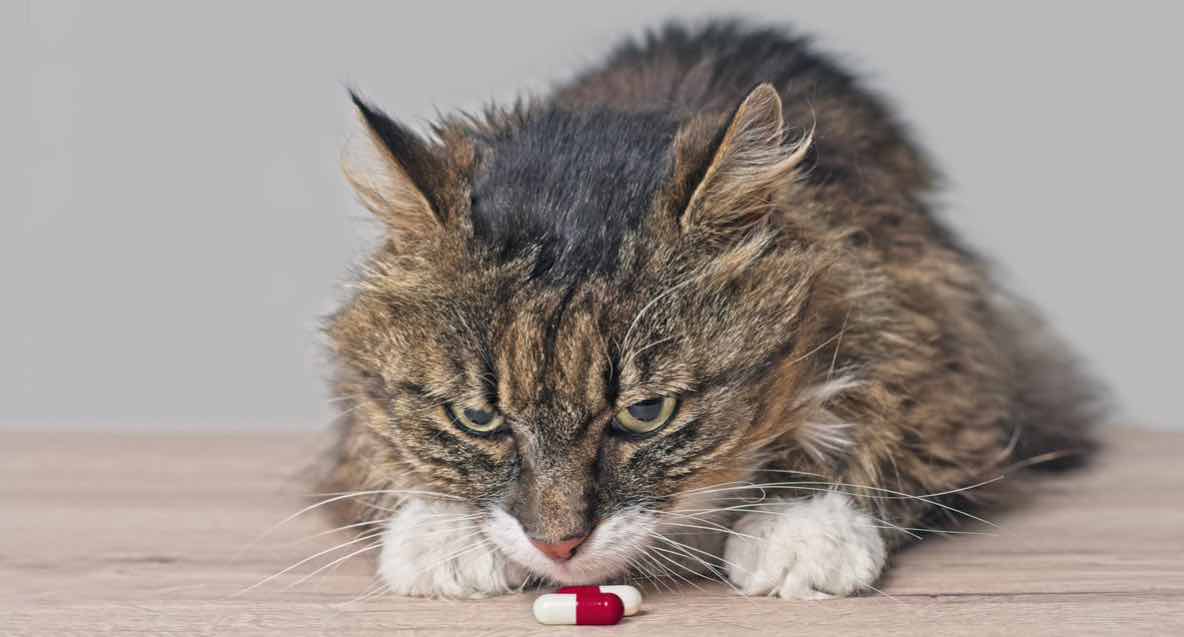Healthy pets for healthy minds
In Families
Follow this topic
Bookmark
Record learning outcomes
There are now 9.6 million dogs and 10.7 million cats in the UK, according to the charity the PDSA (People’s Dispensary for Sick Animals), with 26 per cent of UK adults owning a dog and 24 per cent a cat. Pets are important for wellbeing; 87 per cent of owners say their pet helps their mental health.
The pandemic saw an extra two million pets acquired (PDSA, PAW Report 2021), with lockdowns seeing more time spent at home. Some 34 per cent of all owners said this was their first experience of owning a pet, or owning a particular type of pet as an adult, while 21 per cent of owners had not previously owned any pet.
Now, as people return to the office and with the cost of living crisis deepening, some are finding pet ownership a struggle. Many will welcome advice on pet health and welfare, representing a great opportunity for pharmacies who want to get more involved in this sector.
“Rabbits have been the first post-pandemic casualties, and rescue centres are overrun with them,” says Vanessa Howie, head vet, companion animals at the RSPCA. “Dogs are following, with rescue centres starting to fill up. More owners are seeking help with dog behaviour issues too. And there’s a neutering crisis with cats, as vets couldn’t do these operations during the lockdowns and are still catching up.
“There is an opportunity for pharmacy staff to help educate pet owners about the importance of pet health and preventing problems. There aren’t enough vets to go round and if owners can get help from other professionals, this has to be a good thing.”
At the PDSA, vet Lynne James says: “Pet owners have huge potential in the pharmacy setting as they are often looking for information but have difficulty finding trusted sources. The first step is being keen to engage pet owners – find out if your customers have pets, enquire about their general health, ask about their vaccination status.”
The cost of living crisis is starting to affect pet ownership, with 68 per cent of people finding it more expensive to care for their pets compared to last year, says the RSPCA. It adds that 19 per cent of people are worried about feeding their pets and 28 per cent are worried about being able to care for them. The RSPCA has joined forces with the Pets At Home Foundation and local food banks to offer pet food to struggling owners to help reduce pet abandonment.
Many owners are struggling to afford vaccinations and healthcare checks for their pets too, says the RSPCA. “We are worried this will get worse in the autumn, with the fuel crisis,” says Ms Howie.
"There aren’t enough vets to go round and if owners can get help from other professionals, this has to be a good thing."
The RSPCA has seen more pet owners searching Google for cheap ways to care for their pets, including ‘Can I give my dog paracetamol?’ “It’s always gone on, but it’s never a safe thing to do. Paracetamol is fatal for cats, for example. Pharmacy staff can help to educate customers about this,” says Ms Howie.
It’s not only humans who piled on the pounds during lockdown. According to the PDSA, 1.4 million pets have gained weight since March 2020. PDSA vet nurse Nina Downing says almost a third of owners don’t recognise the effects of obesity on pet health. “It is one of the biggest long-term health concerns for our pet population, with vet professionals estimating up to half of the pet patients they see each week are overweight.”
You can signpost owners to the PDSA’s Weigh Up guide, which helps identify signs of weight gain and gives advice on how to address it.
Preventing health problems in pets
Another effect of the pandemic was that fewer pets received their primary vaccinations or boosters, and levels have still to return to pre-pandemic levels. Some 23 per cent of dogs and 39 per cent of cats have not had regular booster vaccinations. Fewer pets are being regularly wormed than before the pandemic.
“When educating owners about vaccinations, it’s important to be aware of the vaccines that are recommended, and the schedule that should be followed,” says Ms James. “We still see fatal cases of the diseases we vaccinate against, including leptospirosis and parvovirus in dogs, and cat flu. Learning about how these infections present, and the seriousness of the diseases, can help you to educate pet owners about why vaccinations are so important.”
Cat vaccines
Cats need to be vaccinated against:
- Cat flu
- Feline parvovirus
- Feline calicivirus
- If they go outdoors, feline leukaemia virus.
For travel abroad, cats will also need a rabies vaccine. Chlamydophila felis vaccine (which protects against a bacteria that causes eye infection as well as cat flu) is recommended for cats who’ve had the condition.
Kittens have their first vaccines at around nine and 12 weeks old. Then they need a first booster a year later and an annual booster thereafter.
Dog vaccines
Dogs should be vaccinated against:
- Parvovirus
- Distemper
- Adenovirus
- Leptospirosis.
They may need a vaccine for kennel cough if they mix with lots of other dogs, and rabies if they travel abroad.
Puppies should have their first vaccines at six to eight weeks old – two doses, two to four weeks apart. After a year, they need a booster, then an annual booster thereafter.
Treating flea infestations
Most cats and dogs will get fleas at some time, but using a preventative treatment regularly will minimise the risk. Customers can seek early treatment if they recognise the signs that their pet has fleas:
- Excessive scratching
- Areas of hair loss, bald or sore patches
- Skin problems
- Redness or irritation
- Thickened skin in areas such as ear edges
- Tiny dark specks in fur
- Insect bites on humans.
A good way to check if a pet has fleas is to groom them with a fine-toothed comb over some white kitchen paper. Any fleas or droppings will fall onto the paper. If they turn red/brown on adding drops of water, the pet has fleas.
“As with vaccinations, helping owners to recognise the health risks posed by parasites is important – fleas can cause allergic skin disease, lungworm can be deadly in dogs and ticks can spread diseases. Preventing parasites is always easier than treating them,” says Ms James.
Prevention tips
- Clean pet bedding regularly on a hot wash
- Vacuum floors and skirting boards to get rid of fleas and larvae
- Throw away dust bags after use to prevent eggs and larvae developing.
Treating fleas
Vets can prescribe regular flea treatments for dogs and cats, and some are available without a prescription. These are categorised as NFA-VPS medicines and can be dispensed by a pharmacist. Brands include Advantage, Frontline, Effipro, Flevox and Seresto flea collars.
Various formats are available: spot-on treatments that are applied at the back of the neck, as well as tablets and injections. Flea collars are effective if they are NFA-VPS products. Flea powders are not a long-term solution – they are only effective while they are on the pet’s coat and they only kill adult fleas.
It’s essential to use the specific treatment for a dog or cat, as dog flea products are toxic to cats due to the permethrin they may contain. Fleas can transmit worms, especially in cats, so they should be wormed at the same time.
“Pharmacy teams can use their health promotion zone to encourage regular preventative treatments. They can also dedicate a small section of the pharmacy counter to flea applications and wormers,” says Jacquie Lee, Numark information pharmacist.
Around 95 per cent of a flea infestation is in the home, says the PDSA, and they can survive for up to a year. A household flea treatment should therefore be used at the same time as treating a pet– a specific one for dogs or cats. Sheds and garages may need to be treated if the pet goes into those areas too. Vacuum thoroughly, then use a household flea spray. It should last for up to six to 12 months.
Preventing worms
“Cats and dogs should be regularly wormed throughout their life to prevent worm infestations, as they will pick them up repeatedly,” says Ms James. “In both, we worry about roundworms and tapeworms. We must also think about the risk of lungworm in dogs. Vets recommend pets are wormed no less than four times a year, although cover for lungworm requires monthly treatment.
How to give pets a tablet
Some pets really struggle to swallow tablets, so customers should ask their vet if a liquid format is available. If tablets have to be given and can be taken with food and safely crushed, mixing them with the pet’s normal food or hiding them inside a treat can be a good way of getting a them to take them. Otherwise:
- It can help to have two people – one to hold the pet still, the other to give the tablet
- Gently take hold of the pet’s upper jaw with one hand, tilting it upwards. Their mouth should open slightly. Then pull down the lower jaw to open the mouth fully
- Put the tablet at back of their mouth on the tongue and close their mouth, holding their muzzle so they don’t spit it out. Stroke the pet’s throat to encourage them to swallow.
Improving the pet category
“Providing pet health products gives customers the opportunity to purchase products for their pet at the same time as getting health products for themselves,” says Naresh Rallmil, Numark’s lead information pharmacist.
“Being up to date on topical issues and appropriate medications will help to engage the client base. Most veterinary clinics dispense their own medications but will be keen to support pharmacists in becoming good sources of information and effective treatments. Creating a good working relationship with local vets will help when speaking to them about what you may wish to stock; they may be able to assist with additional training,” says Ms James at PDSA.
“The most important pet health products to stock are flea, tick and worm treatments; tick remover tools; paw cleaners; shampoo; brushes and combs; scratch pads; collars and pooper scoopers,” advises Sue Swift, Numark drug tariff information technician.
Flea treatments for cats and dogs include Prescription Only Medicines – Veterinarian, Pharmacist, Suitably Qualified Person (POM-VPS) – and non-food animal – Veterinarian, Pharmacist, Suitably Qualified Person (NFA-VPS). Stock a range of formats, including spot-on, tablets and flea collars. If you are adding flea sprays for the home, go for vet standard products as these are more effective.
“Many members of the public aren’t aware that their local pharmacy stocks pet medicines and can support with pet health queries. Pharmacy teams should use posters and leaflets to highlight the support they can provide. They should also create relationships with local vet practices so vets can highlight to customers that pharmacies are on hand to support with pet health,” says Naresh Rallmil, lead information pharmacist at Numark.
“Most products are sought from vets, but we do get requests for flea and worm treatments, says Ellis Nugent at Davies Chemist in Gurnos, Swansea. "Frontline or Advantage are popular. Customers tend towards the cheapest option; they’re not really looking for a brand. A window or countertop sign highlighting availability is a good idea. If you’re near a vet, tell them too. Get to know your customers and the pets they own. Establish if there is an interest in the community.”


